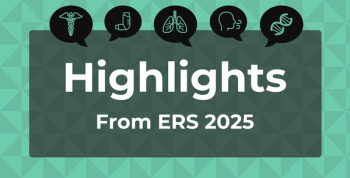
With New OUD Diagnoses on the Rise, More Comprehensive Screenings Needed
Key Takeaways
- Despite declining opioid use, new OUD cases persist among publicly insured youth, with young adults accounting for most diagnoses.
- Co-occurring mental health disorders are prevalent, with anxiety, ADHD, and depression being the most common among youth with OUD.
New research highlights rising opioid use disorder (OUD) diagnoses among youth, emphasizing the need for improved screenings and mental health support.
Clinicians continue to diagnose new cases of opioid use disorder (OUD) among publicly insured youth, even though opioid use continues to drop overall among this group, according to new research.1,2 Further, researchers are calling for more and better screenings of at-risk youth due to high rates of co-occurring
An analysis published
Those in the study population (N = 4,253,703) were included if they had at least 6 months of continuous Medicaid enrollment before an OUD diagnosis/opioid-involved overdose or at least 6 months of continuous Medicaid enrollment per enrollment year and no OUD diagnosis/opioid-involved overdose event. Fifty-three percent of the study population was female, non-Hispanic Black (29%) and non-Hispanic White (46%) were the most common races/ethnicities reported, and managed care plans dominated fee-for-service plans (61% vs 39%).
The overall rate of new OUD diagnoses was 0.27% (n = 11,436); of new nonfatal opioid-involved overdose, 0.09% (n = 3993); and of OUD and new nonfatal opioid-involved overdose, 0.04% (n = 1894). The adolescent group accounted for 15% of new OUD diagnoses and the young adult group accounted for 85%. New nonfatal overdose rates were 23% and 77%, respectively, and OUD and nonfatal overdose rates were 13% and 87%.
Drilling down to the different age ranges, adolescents aged 10 to 14 years and 15 to 17 years accounted for 4% and 11% of new OUD diagnoses, respectively; 7% and 16% of new nonfatal overdoses; and 1% and 12% of both. Young adults aged 18 to 19 years and 20 to 24 years made up 15% and 70% of new OUD diagnoses, respectively; 17% and 60% of new nonfatal overdoses; and 18% and 69% of both. Female patients vs male patients had a higher rate overall of new OUD diagnoses (52% vs 48%), an equal rate of new nonfatal overdoses (50%), and a lower rate of both (46% vs 54%).
When race and ethnicity were considered, these results were seen:
- Highest rates of all 3 outcomes were in non-Hispanic White patients: new OUD diagnoses, 64%; new nonfatal overdoses, 53%; both, 58%
- Non-Hispanic Black patients had the second highest rates for new OUD diagnoses (17%) and new nonfatal overdoses (21%)
- Hispanic patients had the second highest rate of both (16%)
- Hispanic patients had the third lowest rates of new OUD diagnoses (10%) and new nonfatal overdoses (12%)
- Other ethnicity patients (Alaska Native, American Indian, Asian, Native Hawaiian, other Pacific Islander, or unspecified) and unknown ethnicity patients had the lowest rates of all 3 outcomes: 5%, 6%, and 7% and 6%, 8%, and 6%, respectively
Looking at health plan type, fee-for-service vs managed care, rates were lower for all 3 outcomes in the former group vs the latter group: 42% vs 58% of new OUD diagnoses, 40% vs 60% of new nonfatal overdoses, and 46% vs 54% of both outcomes.
Thirty percent of patients overall had a co-occurring mental health diagnosis, of which anxiety (17%), attention-deficit/hyperactivity disorder (13%), and depression (11%) were the top 3. This rate jumped to 61% of all new OUD diagnoses, 57% of all new nonfatal overdoses, and 49% of both outcomes. Anxiety was the top co-diagnosis in 38%, 35%, and 30%, respectively; depression was the second, in 27%, 30%, and 24%; and posttraumatic stress disorder was the third, in 18%, 14%, and 12%. Schizophrenia and psychotic disorders were seen in 10%, 9%, and 8%. There were no cases of bipolar disorder.
Co-occurring substance use disorders were also considered, and cannabis use disorder topped this list, being seen in 43% of those with new OUD diagnosis, 28% of those with new nonfatal overdose, and 33% of patients with both. Stimulant disorder was the second most common in 31%, 19%, and 25%, and alcohol use disorder was the third most common in 22%, 15%, and 17%. Sedative or hypnotic use disorder had the lowest rates of 10%, 7%, and 9%.
“Youth with OUD face barriers to care, including widespread stigma,” the study authors wrote. “Increasing access to medications for OUD, which are underused in youth, by improving diagnosis, stigma, and access to health care for youth is essential.”
Still, there are limitations to their findings. This sample is not a full representation and does not cover all youth who lack access to care in traditional settings, and the data on clinical diagnoses could have underestimated the prevalence of co-occurring conditions.
References
- Results from the 2023 National Survey on Drug Use and Health (NSDUH): key substance use and mental health indicators in the US. Substance Abuse and Mental Health Services Administration. July 2024. Accessed October 27, 2025.
https://library.samhsa.gov/product/2023-nsduh-report/pep24-07-021 - Hadland SE, Wharam JF, Schuster MA, Zhang F, Samet JH, Larochelle MR. Trends in receipt of buprenorphine and naltrexone for opioid use disorder among adolescents and young adults, 2001-2014. JAMA Pediatr. 2017;171(8):747-755. doi:10.1001/jamapediatrics.2017.0745
- Chen Y, Terranella A, Nataraj N, Mercer Kollar LM, Harper CR. Opioid use disorder and nonfatal opioid-involved overdose among Medicaid-enrolled US youth, 2020-2023. JAMA Pediatr. Published online October 27, 2025. doi:10.1001/jamapediatrics.2025.4105
Newsletter
Stay ahead of policy, cost, and value—subscribe to AJMC for expert insights at the intersection of clinical care and health economics.













































